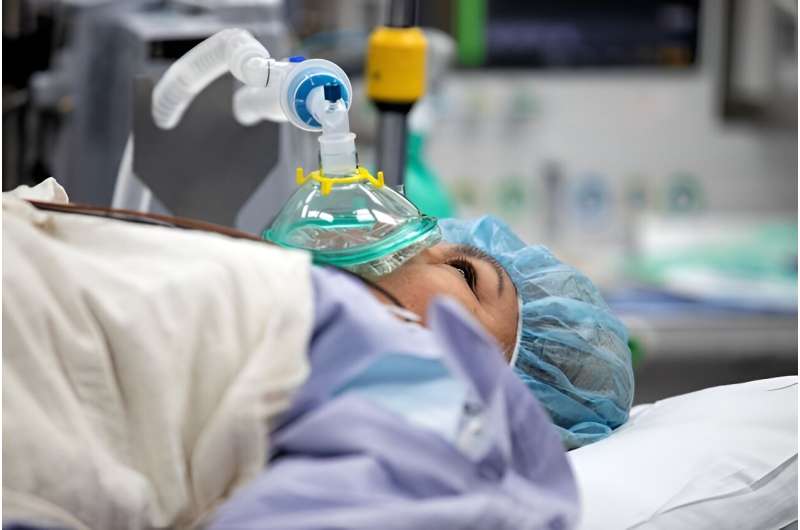This article has been reviewed according to Science X's editorial process and policies. Editors have highlighted the following attributes while ensuring the content's credibility:
fact-checked
peer-reviewed publication
trusted source
proofread
High or low oxygen levels are safe during heart surgery: Study

Two out of 10 people who receive cardiac surgery are affected by acute kidney injury, prolonging their hospital stay and increasing their risk for chronic kidney disease, cognitive decline and heart failure.
A Vanderbilt University Medical Center (VUMC) study explored one possible cause—hyperoxia or high concentrations of oxygen given to such patients during surgery—as opposed to doses more similar to air. The study, recently published in the journal JAMA Surgery, concluded that hyperoxia increased oxidative stress during surgery, but this effect did not persist after surgery and did not lead to more acute kidney injury.
The results suggest that administering high or low levels of oxygen are both safe during cardiac surgery, said corresponding author Frederic (Josh) Billings IV, MD, MSc, professor of Anesthesiology and Medicine.
"This study broadens the acceptability of various oxygen administration strategies during cardiac surgery," Billings said.
The clinical trial, from April 2016 to October 2020 with one year of follow-up, took place entirely at VUMC. Participants were randomly assigned to receive high oxygen (hyperoxia) or a lower amount of oxygen intended to maintain normal blood oxygen levels (normoxia).
Two hundred study participants were assessed for oxidative stress, acute kidney injury, delirium, myocardial injury, atrial fibrillation and other secondary outcomes. Other than an increase in oxidative stress, the participants in the study who received hyperoxia had similar outcomes as those with normoxia.
First author Marcos Lopez, MD, MS, associate professor of Anesthesiology, said, "The study was designed to examine oxygen administration at the high and low ends of the spectrum to maximize the likelihood of seeing an oxygen treatment effect. We achieved oxygen treatment goals with meticulous protocol adherence but saw no significant differences in organ injury."
Billings noted that the study covered just the operative period and suggests future research might examine the results of extending hyperoxia or normoxia into the postoperative period. This is a time when cardiac surgery patients receive mechanical ventilation and may benefit from other oxygen administration strategies, Billings said.
Other authors of the study were Matthew Shotwell, Ph.D., Cassandra Hennesey, MS, Mias Pretorius, MBChB, David McIlroy, MBBS, Melissa Kimlinger, MD, Eric Mace, MD, Terek Absi, MD, Ashish Shah, MD, and Nancy Brown, MD.
More information: Lopez, M. G. et al. Intraoperative Oxygen Treatment, Oxidative Stress, and Organ Injury Following Cardiac Surgery, JAMA Surgery (2024). DOI: 10.1001/jamasurg.2024.2906





















